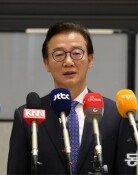Medical schools without students, professors, and facilities
Medical schools without students, professors, and facilities
Posted February. 10, 2025 07:23,
Updated February. 10, 2025 07:23
The opening of classes for this school year at 39 medical schools across the country is less than a month away, but it is difficult for them to open normally due to delays in expanding facilities and recruiting professors. It is hard to predict when students who left their schools in protest of the government’s plan to increase medical student seats will return to class. As the conflict between the medical community and the government continues for more than a year now, medical schools are 'effectively closed' due to a lack of students, professors, and facilities.
This year, Chungbuk National University's medical college has to teach about 170 students, including 125 freshmen and 49 students who took a leave of absence during their freshman year last year. That number is 3.6 times more than in previous years. When The Dong-A Ilbo team visited Chungbuk National University College of Medicine, the large lecture halls were too small to accommodate the increased number of students and they were so old that they had signs of water leak, while only four of the required 16 small lecture halls being converted from student club rooms have been completed. An anatomy lab for basic medicine classes has not yet secured the funding.
Hiring professors has been slow, and it is unclear if teaching can be provided properly. The general chemistry class, a required course for first-year medical students, was originally taught by one professor from Chungbuk National University's chemistry department. Three professors are needed this year to cater to the increased number of students, but only two have been hired. This is because last year's professor recruitment only filled 70 percent (27) of the professors that need to be hired (39). Even this gain was not due to an increase in the total number of professors at Chungbuk National University Medical School but due to the conversion of existing university hospital-funded professors into full-time professors at the medical school.
Such a pitiful situation is seen not just at Chungbuk National University but also at other medical schools in provincial regions that have increased their enrollments recklessly. However, due to the delayed investment, there is even a possibility that those schools could fail in the evaluation and accreditation by the Korean Institute of Medical Education and Evaluation scheduled next month. Currently, 95 percent of all medical students (18,343) are on leave of absence, and only a fraction of the students boycotting class have submitted applications to return to school. The total number of medical school student seats for school year 2026 is still unknown. Due to such uncertainty, there are concerns that planned investments in facilities and professors will not be made in the end.
The government and the medical community have failed to narrow differences, neglecting the situation of ‘medical schools lacking the three key elements” of students, professors, and facilities. Amid the leadership vacuum in the government, even the government’s will to resolve the medical conflict seems to have waned. In a survey conducted by The Dong-A Ilbo of presidents of training hospitals across the country, three out of four suggested reducing the total number of medical students to 3,058, a number that is smaller than before the expansion, or less, saying only then the shock of this year's significant expansion can be absorbed gradually. The current situation is already grave and lamentable, but the government and the medical community should urgently agree on the number of medical student seats for next year and normalize medical education.



![“양말 버릴 필요 없다”..수명 늘리는 가성비 甲 루틴 3단계 [알쓸톡]](https://dimg.donga.com/c/138/175/90/1/wps/NEWS/IMAGE/2025/12/09/132929830.3.jpg)
![싱크대에 끓는 물 부어 청소? 수리비 폭탄 맞는다 [알쓸톡]](https://dimg.donga.com/c/138/175/90/1/wps/NEWS/IMAGE/2025/12/10/132935996.3.jpg)

![물줄기 확 세진다…샤워기 30분만에 복원하는 방법 [알쓸톡]](https://dimg.donga.com/c/138/175/90/1/wps/NEWS/IMAGE/2025/12/08/132919854.3.jpg)
